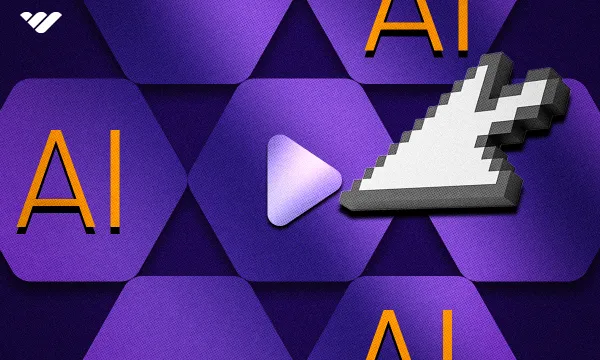Fueled by shifting workplace trends, tech advancements, and the booming creator economy, the demand for online courses is only expected to grow. Whether you’re a course taker or course creator wanting to understand the state of the market beyond 2025, we’ve compiled over 50 course statistics.
Dive in as we explore key course skills, platforms, and more.
Course industry statistics
The first online courses hit the Internet in the early 2000s1.
The first MOOC (massive open online course), ALISON, was launched in 2007, and two years later, over 5.5 million students had taken at least one online course.
The 2010s ushered in a new era of widespread popularity for online courses.
- Stanford released three free online courses that attracted over 100,000 enrollments each in 2011.
- Over the next few years, large MOOCs like Udacity, edX, and Coursera entered the scene2, offering internet users access to thousands of quality courses across various disciplines.
- By 2015, Coursera offered 36% of all courses3, while edX offered 18%.
- Over 80 million students took 9000+ courses around the world in 20174, with a majority of these courses being concentrated in Tech and Business subjects.
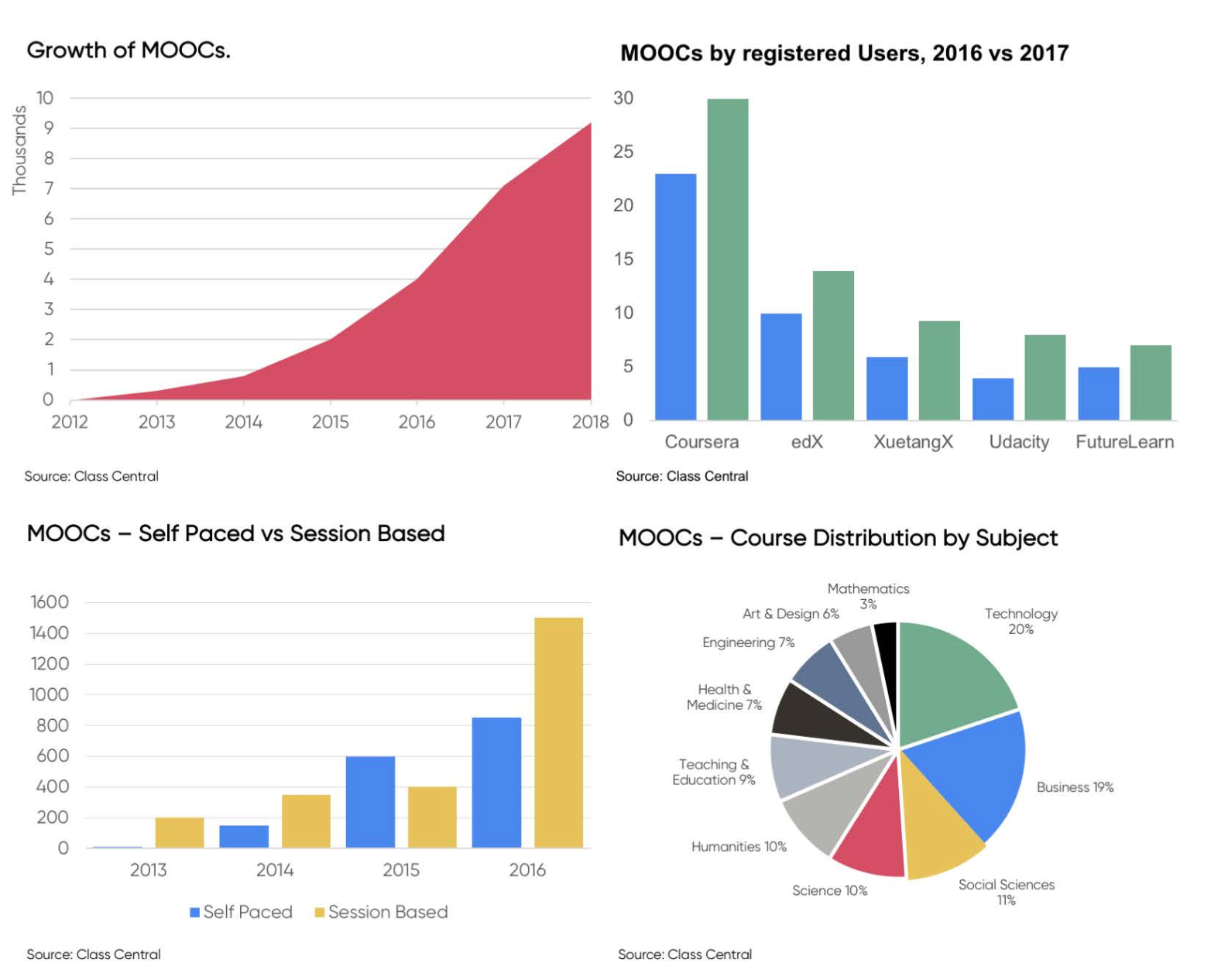
The 2020s have seen online courses across multiple platforms surge due to factors such as the pandemic, global skills gaps, and the rise of the creator economy.
- Over 220 million students signed up for at least one MOOC5 in 2021.
- In the UK, searches for the phrase ‘online courses’ increased by over 200% between 2019 and 2021.
- Looking ahead, the MOOC industry, worth $22.8 billion as of 2024, is estimated to exceed $119 billion6 in 2029.
Offering significant opportunities for growth, higher education is expected to attract over $2.4 trillion in spending7 by 2030.
Meanwhile, corporate and lifelong learning, which includes non-regulated, non-degree courses delivered mostly online, is set to attract over $850 billion in spending. Overall, growth in both segments will be driven by technology and the accelerated reskilling and upskilling of the global workforce.
Course consumer statistics
By 2029, consumers in the online learning market will exceed 1.1 billion8.
The highest number of users will come from the Asia Pacific (APAC) region, which is set to register around 740.8 million users. Other key regions include:
- Europe, Middle East, and Africa (EMEA) - 173.5 million users
- North America - 130 million users
- Latin America (LATAM) - 109.5 million users
- (Middle East and North Africa) MENA - 23.8 million users
With 1.1 billion jobs set to be transformed by technology in the coming decade9, estimates suggest that over 50% of the global labor force will require reskilling between 2024 and 2026.
As a result, the demand for courses across several tech-forward disciplines is expected to surge.
In a study, 81% of people who changed career paths attributed it to an online course10.
In the same study, 31% of respondents said they would take an online short course to gain new skills to further their career, making it the top reason for enrolling in short courses. A further 42% said online courses were the top way to gain new skills to start a business.
30% of people between the ages of 16 and 24 opted to take online short courses to learn new skills.
Additionally, 23% of learners preferred online courses to other methods primarily because of the freedom of learning at their own pace. Other key reasons included the ability to learn from home (22%) and overall flexibility (20%)
At 21% for undergrads and 23% for graduates, business courses were the leading field of study11 for online college students in the US in 2023.
This was followed by:
- Health, Nursing and Medicine - 19% for graduates and 20% for undergrads.
- Computers and IT - 19% for graduates and 16% for undergrads.
- Arts and Humanities - 9% for graduates and 11% for undergrads.
- STEM - 6% graduates and 10% undergrads.
- Social Sciences - 6% graduates and 10% undergrads.
- Education and teaching - 1% graduates and 7% undergrads.
- Counseling and Human Services - 6% graduates and 5% undergrads.
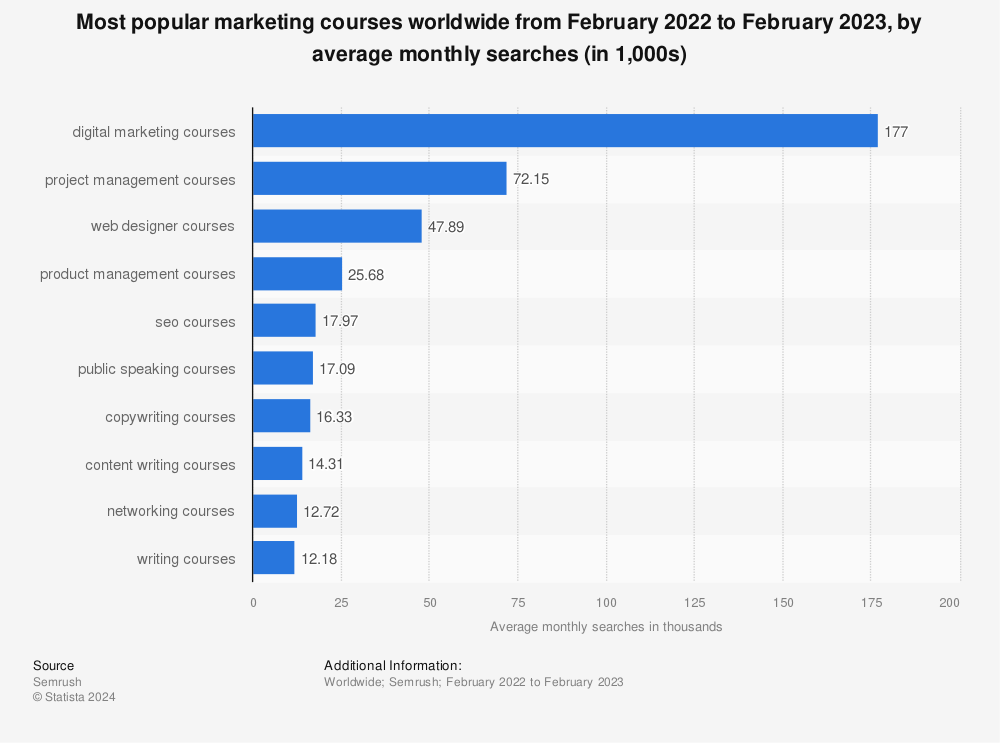
Between February 2022 and February 2023, digital marketing and project management were the most searched marketing courses12 globally with over 177,000 and 72,000 average monthly searches each, respectively.
This was followed by web designer courses with over 47,000 monthly searches, as well as
- Product management courses - 25,680 monthly searches
- SEO courses - 17,970 monthly searches
- Public speaking courses - 17,009 monthly searches
- Copywriting courses - 16,330 monthly searches
- Content writing courses - 14,310 monthly searches
- Networking courses - 12,720 monthly searches
- Writing courses - 12,180 monthly searches
There were over 100 million students enrolled in open online courses13 in a wide range of subjects globally in 2022.
Between 2011 and 2021, the number of learners taking courses on MOOC platforms increased from 300,000 to a whopping 220 million14. MOOCs leading the charge in terms of market share were Udemy, edX and Coursera.
Course skills statistics
By 2030, one in 16 workers will need to change occupations15 to meet the changing needs of the labor market.
Courses will play a crucial role in imparting new skills and bridging global skills gaps.
As of 2025, the skills needed for jobs are expected to increase by 10% year-over-year, fueling the demand for online courses.
The most popular courses on various online platforms are increasingly reflecting global skills gaps across various industries.
On LinkedIn, 45% of employers used skills data to fill their roles16 in 2023, up 12% from 2022.
This represents a growing trend towards skills-based hiring to meet talent shortages and close skills gaps. In response, millions of people are set to enroll in online courses to increase their employability.
The most in-demand skills (featured in 78% of global job postings) for 2024 according to LinkedIn Learning17 were:
- Communication
- Customer service
- Leadership
- Project management
- Management
- Analytics
- Teamwork
- Sales
- Problem-Solving
- Research
Over 73% of companies in a global survey identified creative thinking skills18 as the skills most expected to increase in importance between 2023 and 2027.
This was followed by:
- Analytical thinking - 71.6%
- Technological literacy - 67.7%
- Curiosity and lifelong learning - 66.8%
- Resilience, flexibility and agility - 65.8%
- Systems thinking - 59.9%
The most in-demand tech skills19 in 2023 were web development (58.53%) and DevOps (35.5%).
AI and Cybersecurity skills were also a priority, reflecting the course areas that developers around the world are keen to invest in.
Meanwhile, the most in-demand IT skills worldwide were Java (27.15%) and Javascript (19.17%)
This was followed by SQL (8.59%) and Python (8.01%).
In 2023, 48% of US companies planned to invest in online courses20 as their main plan for AI skills training.
The demand for AI skills has increased across all sectors, prompting a new wave of demand for courses geared towards AI.
Course creator statistics
The creator economy is set to reach $500 billion21 by 2027.
The number of creators is expected to grow by between 10-20% per year over the next five years, among these are educator creators monetizing their skills through courses and other digital products.
Courses were the top revenue stream22 of six-figure creators according to a 2024 Kajabi report.
The same report also found that:
- Course offers sold on Kajabi increased from 9.1 million in 2021 to 12 million in 2023.
- 70% of creators said online courses made them the most revenue over the last 12 months.
- 43% of six-figure creators used AI weekly to help them increase their marketing content output and build digital products.
- Top niches included Business and Marketing, Finance, and Real Estate.
As of 2024, the average creator is 42 years old.
20% of people between the ages of 41-56 are digital creators, up 16% from 2023.
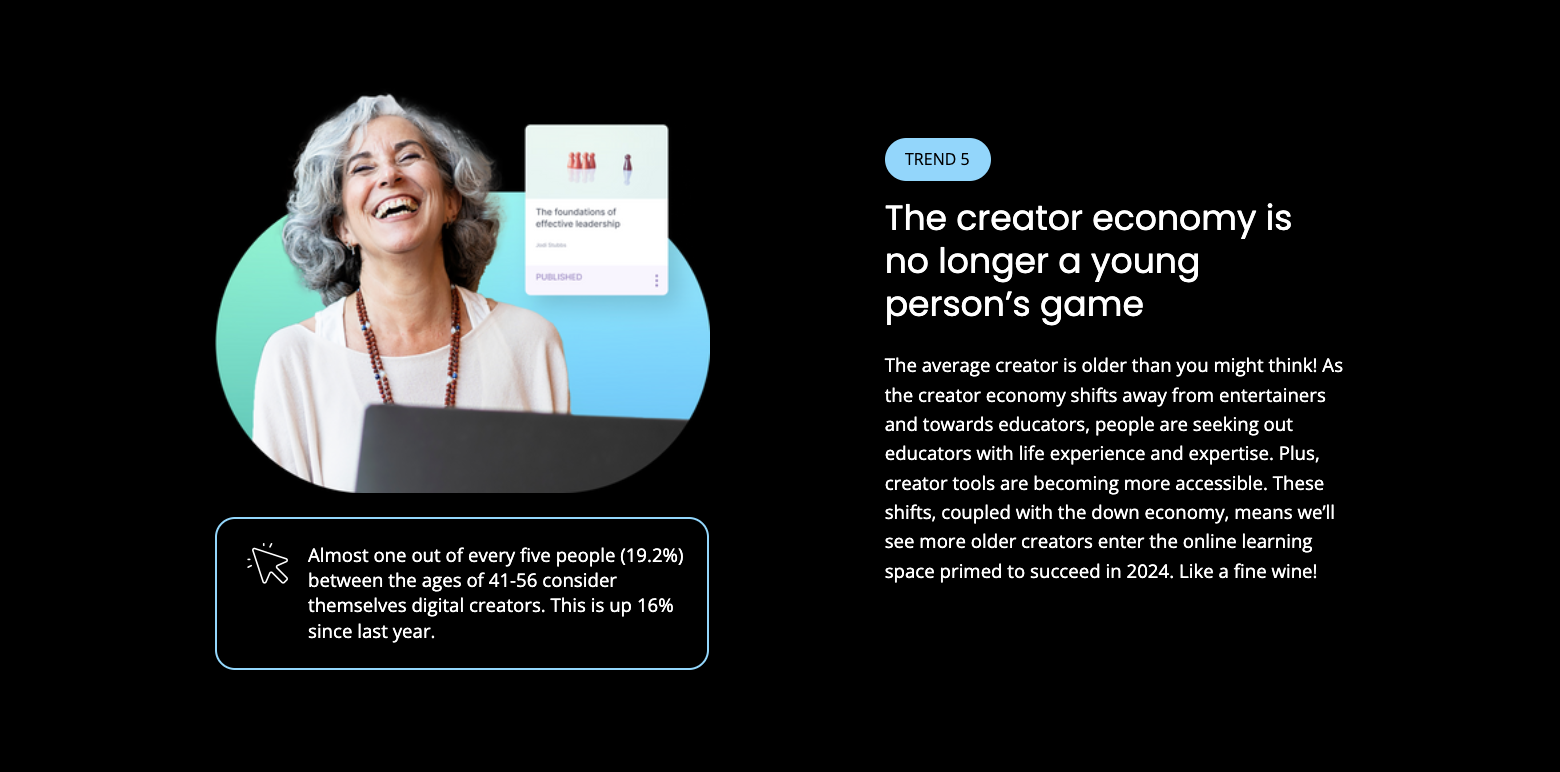
49% of people would consume AI-created content from course creators.
This presents an opportunity for course creators to leverage AI to streamline lesson planning and other administrative tasks.
In 2024, 73% of six-figure creators anticipate that AI will help save over 26 hours a week.
Meanwhile, 56% believe AI will be one of the best ways to reduce burnout.
28% of Americans considered starting a course-selling business to share their knowledge in 2023.
This number will only increase as new technologies make the industry more accessible.
Course platform statistics
MOOCs
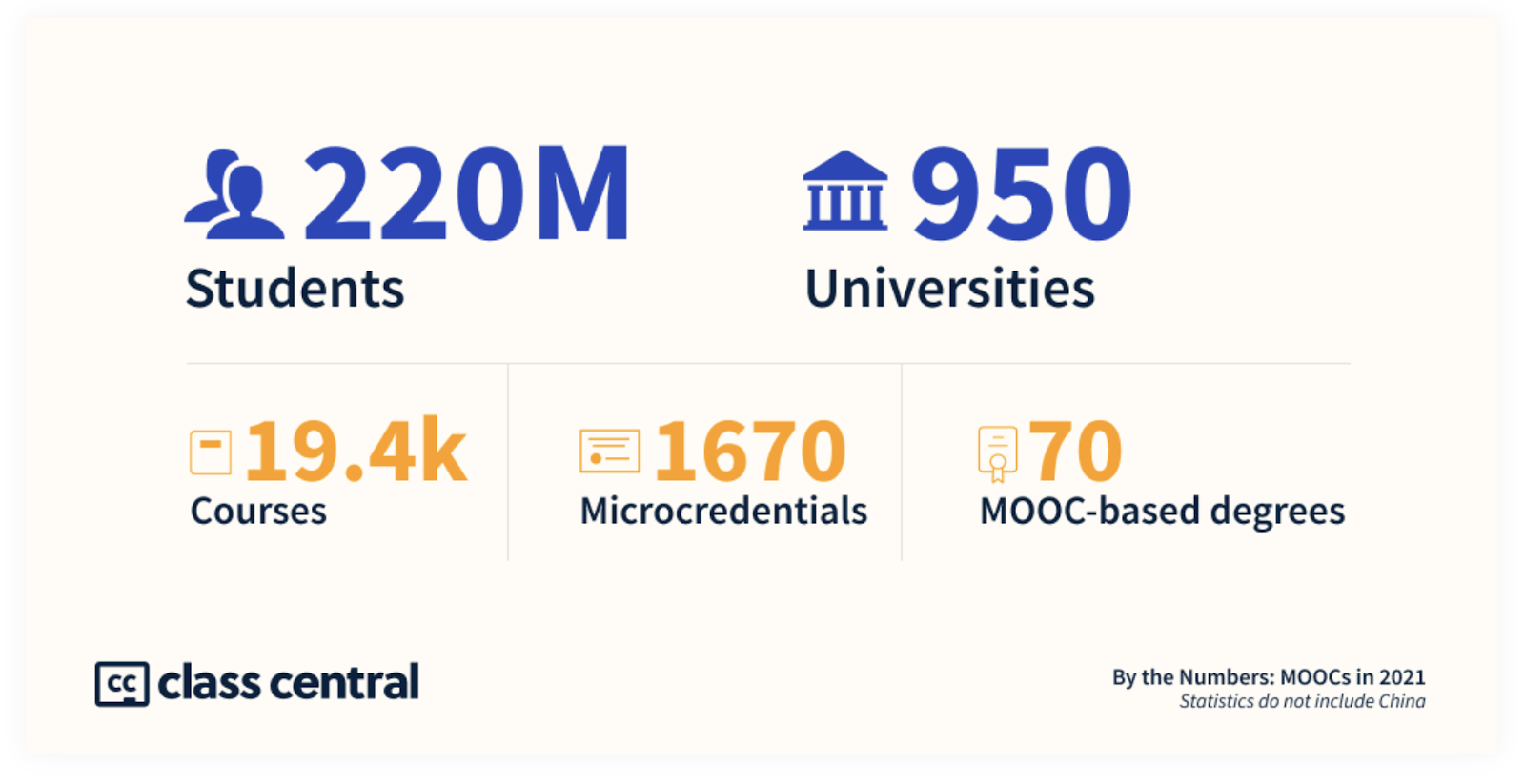
The top 3 MOOC platforms, Udemy, Coursera, and 2U(edX) are among the most valuable23 publicly traded education companies by market cap.
As of April 2024:
- Udemy had a market cap of $1.55 billion
- Coursera had a market cap of $1.51 billion
- 2U had a market cap of $28.4 billion
Udemy statistics
As one of the most popular online course marketplaces on the internet, Udemy24 offers more than 210,000 online video courses. The platform also has 69 million students and over 75,000 instructors.
According to a 2024 Udemy report, learning hours of technical skills increased by 49% in 2023 on Udemy Business25.
Additionally:
- Close to 10 million new global learners enrolled in over 134 million courses throughout 2023.
- Udemy saw over 10 million enrollments in IT certification courses across both business and individual course takers.
- Among business learners, the top certification was the Professional Cloud DevOps Engineer certification for Google Cloud, which grew 1,452% year-over-year.
As of October 31, 2023, there were 1,100 ChatGPT courses taught by close to 800 instructors on Udemy26.
Additionally, these ChatGPT courses saw over 2.2 million enrollments on Udemy across the world.
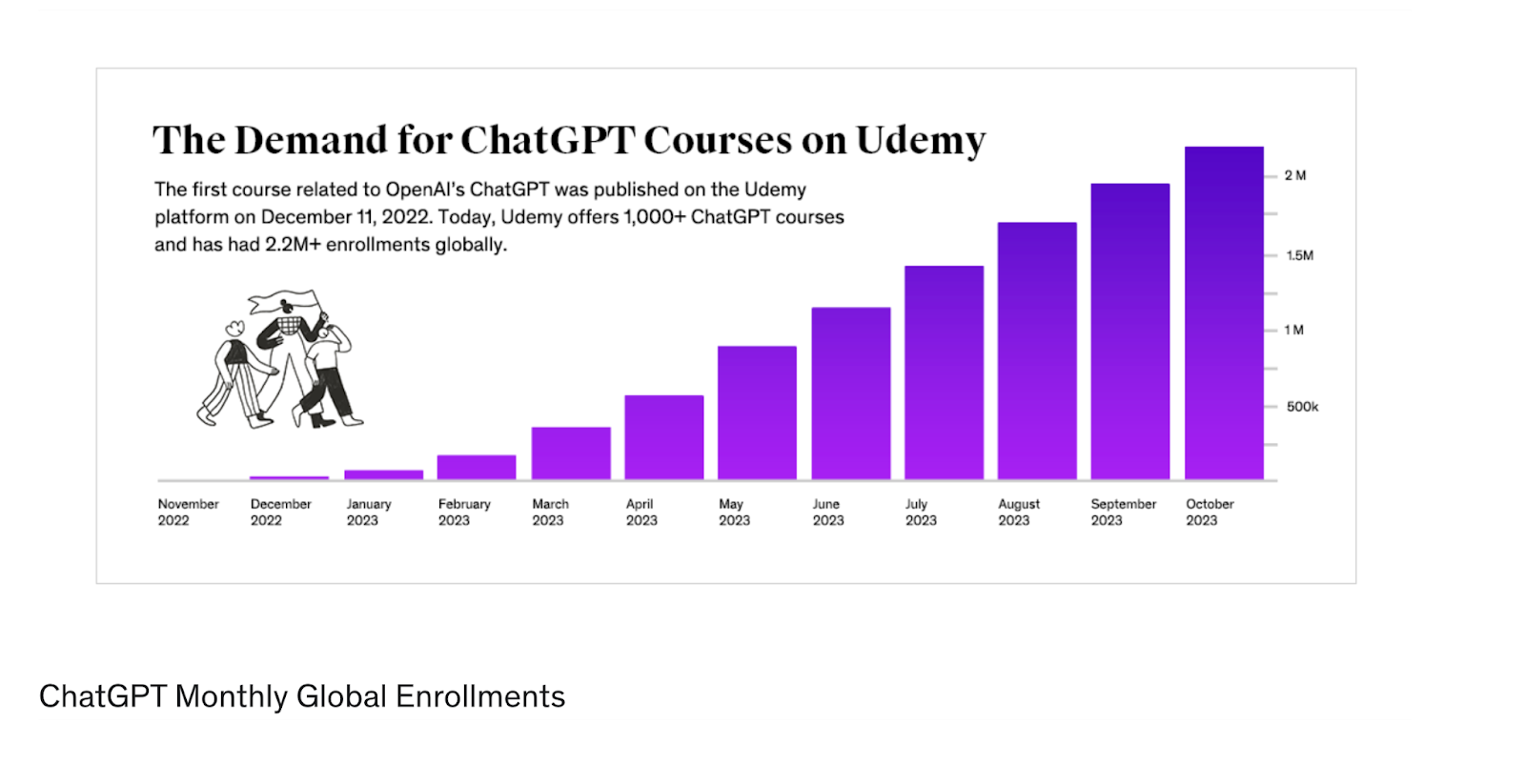
Coursera statistics
As of December 31, 2023, Coursera offers over 6,900 courses27 to 142 million learners. The platform has over 325 universities and industry experts providing courses from entry-level micro-courses to university degrees.
As of January 2024, Coursera launched its Generative AI Academy offering several GenAI courses28 from providers like Google and IBM.
Among the new courses, Generative AI for Everyone created by DeepLearning.AI and Andrew Ng, was the most popular course of the year with 65,000 enrollments in the first two weeks alone.
In 2023, students logged more than 45 million course enrollments, with 82% giving their course a 5-star rating.
Business learners, or those enrolling in courses to improve their on-the-job skills, logged over 4.8 million course enrollments.
A 2023 report by Coursera found that through taking courses on the platform, 77% of learners and 91% in developing economies reported career benefits like getting a job, getting a promotion, and more29.
The same report found that:
- 95% of course takers and 99% in developing economies reported personal benefits, such as feeling more accomplished and confident after taking online courses.
- 30% of unemployed course takers were employed after completing their most recent course or program.
- 25% of entry-level professional certificate course takers got a new job.
edX statistics
Acquired by 2U in 2021, edX delivers over 4600 courses through 260 partners to over 86 million people globally30.
As per its 2022 Impact report31, edX courses have a:
- 73% graduation rate for degree courses.
- 77% graduation rate for boot camp courses.
- 91% completion rate for executive education courses.
Udacity statistics
Founded in 2011, Udacity offers over 300 courses32 to over 16.9 million registered users across 240 countries. With over 700 industry experts, the platform has over 15,000 hours of course content in its catalog.
- As of 2024, 73% of Udacity course graduates reported a favorable career change.
- The potential cost savings from increased productivity due to courses taken on the platform was estimated at $2.9 million.
Top course platforms
Course platforms such as LinkedIn Learning, Kajabi, MasterClass, Thinkific and Skillshare that help creators create and sell their own online courses, represent the largest creator category33 by revenue.
These platforms have increased their revenue by 120% over the last two years.
Platforms Kajabi and Masterclass received $550 million and $475 million in funding34 respectively in 2021.
This valued both companies at over $2 billion, placing them among the top creator platforms for that year.
Kajabi Statistics
Launched in 2010, Kajabi has over 60 million students35 across 120 countries and over 50,000 course creators.
- Kajabi saw customer growth surge by 269% between 2019 and 2021.
- Personal development and health & fitness were the top industries for knowledge creators on Kajabi, with creators posting increased earnings of 94% and 101% respectively between 2020 and 2021.
- Course creators in the academic space saw a 45% increase in their earnings between 2020 and 2021.
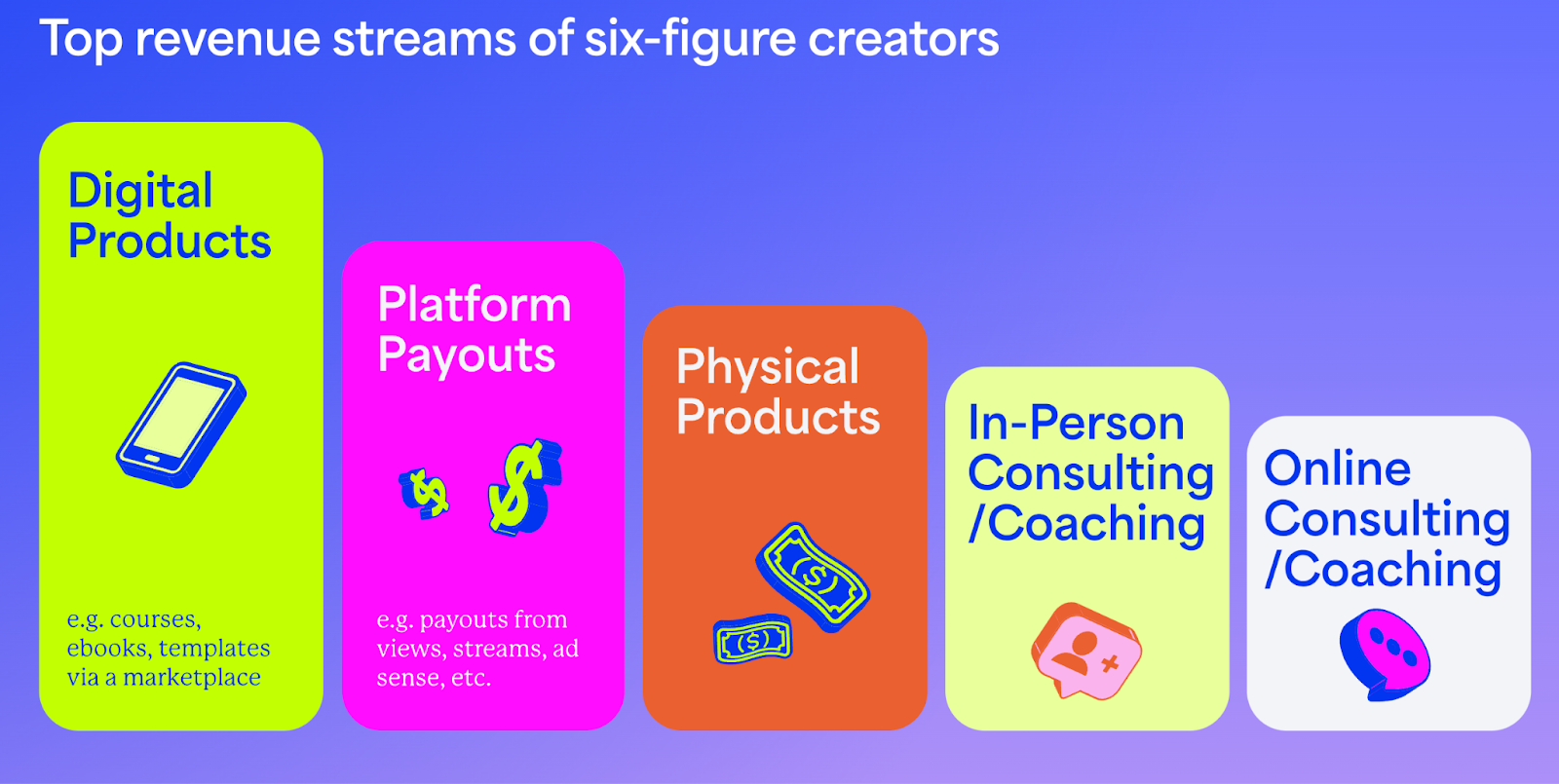
Thinkific statistics
Established in 2012, Thinkific enables course creators to create, market, sell, and deliver their own courses. It also offers a course creator network of over 51,000. As of 2024, Thinkific has more than 1 million courses published and over 378 million course enrollments36.
- Thinkific saw a 368% surge37 in new courses created on its platform in March 2020.
- New course creators increased by 221% on the platform in March 2020.
- In the first few weeks of lockdowns Arts and Entertainment courses increased by a staggering 2108% while Education and Health & Fitness courses increased by 881% and 543% respectively.
- Beyond the lockdown boom, courses in Software and Tech increased by 1153%, Fashion & Beauty by 792% and Personal Development by 408%
MasterClass statistics
Founded in 2015, MasterClass puts a spin on traditional online courses, allowing users to learn directly from experts and their favorite celebrities. The platform has over 100 instructors and 200 classes on its platform38 across categories like Food, Design, Arts and Entertainment and more.
- The MasterClass app had over 1 million downloads as of 2024.
- 25% of MasterClass students said MasterClass courses had changed their lives39.
- In 2023, CEO David Rogier said it took 4-5 months to organize, plan, script, shoot, and finish an educational video on MasterClass.
Skillshare statistics
Launched in 2010, Skillshare is an online course platform40 community with over 600,000 members. Users have access to over 25,000 hands-on creative classes taught by over 8000 creative experts.
- In 2022, over 2000 teachers joined the platform41.
- Skillshare saw a 162% increase in courses related to emerging technology and a 65% increase in courses focused on mindfulness and balance.
- Skillshare members watched over 380,000 minutes of classes about side hustles in 2022.
LinkedIn learning statistics
After acquiring Lynda.com in 2015, LinkedIn rebranded the platform to LinkedIn Learning and entered the lucrative e-learning space. As of 2024, 27 million users have access to over 5000 courses42 to help improve their professional skills.
Course revenue and costs statistics
Course revenue
In 2024, the professional certificates market was expected to exceed $6 billion43, or an average revenue per user (ARPU) of $115, a 13.4% increase from 2023.
To improve their skills and career prospects, people worldwide are enrolling in professional courses. Leading the charge is the US market, where user penetration is 2.3% and revenue was expected to hit $1.96 billion in 2024.
By 2028, market volume is expected to grow at a CAGR of 8.56% to reach $8.93 billion.
Additionally, in the same year, the number of users in the professional certificates market will exceed 70 million.
Global online learning revenue was expected to exceed $185.2 billion44 in 2024, an increase of over 11% year-over-year.
Additionally, online learning revenue was expected to grow at a CAGR of 8.6% between 2024 and 2029 to over $279 billion. Online learning platforms and the professional certificates they offer will account for nearly $65 billion of this revenue.
In 2023, the big three course platforms generated combined revenues of around $2.8 billion45.
2U generated revenue of $940 million, while Udemy and Coursera made $720 million and $630 million respectively.
Other popular platforms for course takers and creators alike have recorded the following revenues:
- Course creators and knowledge entrepreneurs have earned $6 billion on Kajabi.
- Course creators on Thinkific earned over $340 million in 2023 and over $1.7 billion
- Top-earning course creators on Skillshare make over $100,000 each year.
- Udemy paid out $192 million to instructors46 in 2022.
- On Thinkific, course creators earned over $275 million in revenue47 from direct course sales in 2021.
- Course creators on Teachable earned close to $400 million48 in 2020 alone.
- Instructors on MasterClass were paid $100,000 upfront and earned 30% of their revenue in 2017.
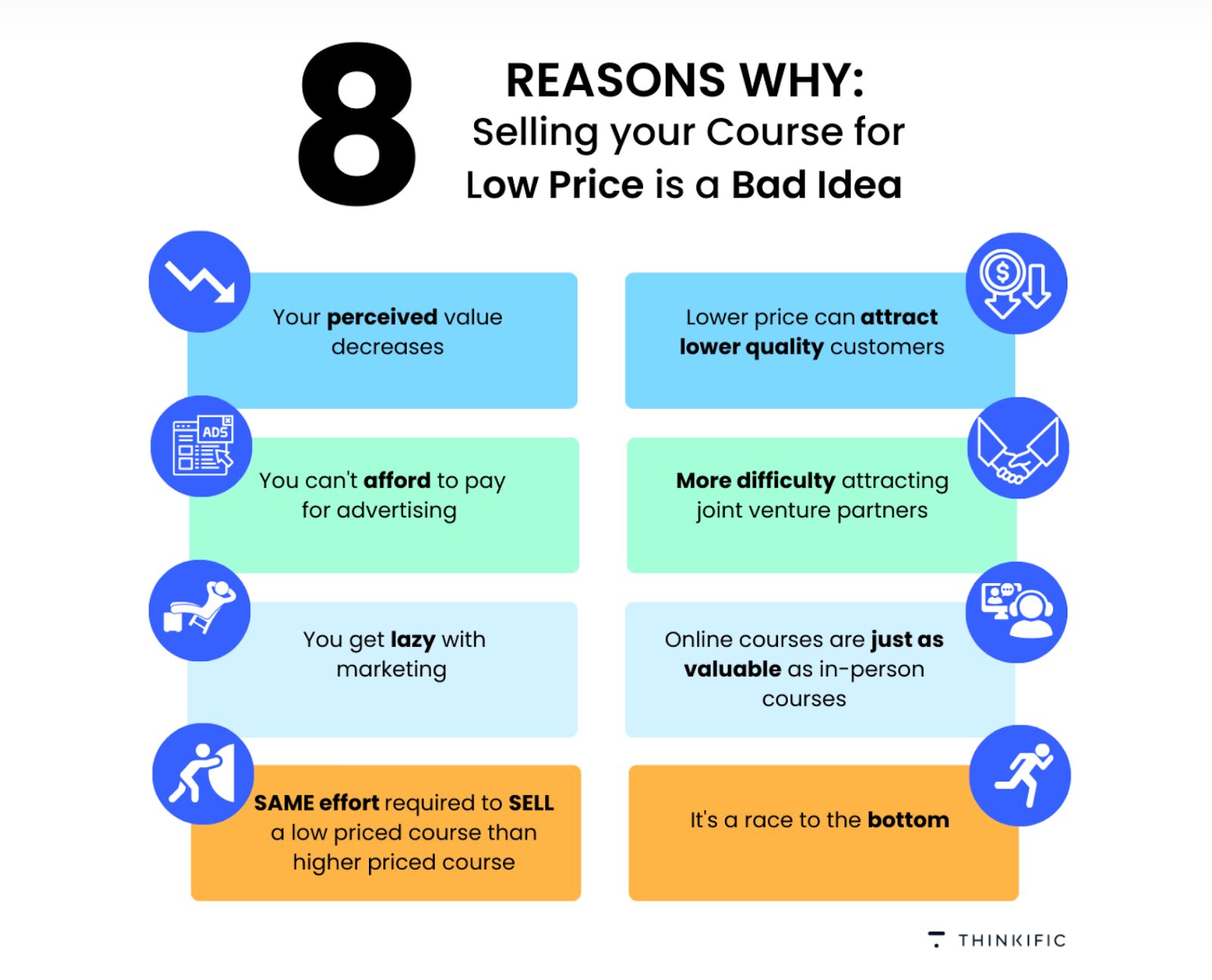
Course pricing
MOOCs on major platforms like Coursera cost up to $200 per course or between $30 and $60 per month subscription.
However, some courses can be audited for free or completed by applying for financial aid.
Course creators should price their online courses for no less than $50, while creators looking to maximize their revenue should price their courses for $199 or more49.
The average online course cost around $137 in 202150 with over 89% of all online courses costing under $350.
Course creation costs
While the cost of developing an online course depends on many factors, research has pegged it at between $4000 to $10,000 or 180 to 360 hours on average to produce one hour of eLearning material51.
Meanwhile, other sources have placed costs as low as $200 with an upper limit of $10,000.
To build, sell, and host their courses on online platforms like Udemy, Kajabi, Teachable, or Thinkific, course creators can expect to pay anywhere between $0 and $399 per month.
Costs tend to include access to key features such as:
- Dedicated Learning Management Systems (LMS)
- Branding options
- Integrated features such as live streaming, chat, and communities
- AI features to streamline course creation
- Various monetization options such as direct sales, memberships, and more
- Accessibility across PC and mobile
- A support network
Course marketing statistics
52% of course creators stated that generating leads was their biggest challenge.
The costs of lead generation can add up, with course creators paying between $1 (or less) to $10+ per lead depending on their course topic search terms, and competition in their market.
According to a 2024 Hubspot report52, the top methods creators used to reach their audiences were:
- Social media
- Email newsletters
- Blogging
- Paid promotion
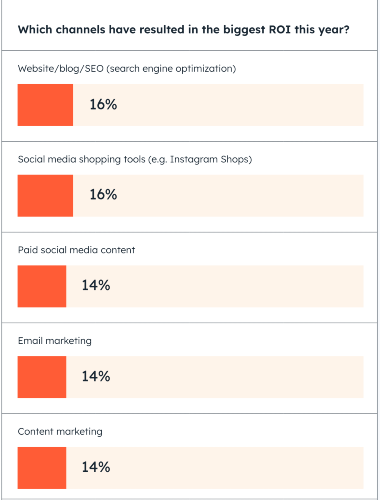
Additionally, 78% of course creators surveyed by Kajabi reported that regular audience engagement was the most important marketing technique.
A further 88% of creators cited social media as their top lead generation channel.
Social media marketing
Over 50% of top-earning creators believe social media is essential for directly engaging their audiences and building community.
According to a 2024 Hubspot report, Facebook, Instagram, YouTube, and TikTok have the strongest ROI.
In 2023, the top social channels for lead generation were:
- Instagram - 22%
- YouTube - 21%
- TikTok - 19%
Meanwhile, the top channels for building community were:
- YouTube - 22%
- TikTok - 22%
- Facebook - 18%
Due to factors like algorithms, banned accounts, or even outages, which could impact their bottom lines, creators aren’t solely relying on social media platforms for revenue generation.
Beyond 2024:
- 28% of top-earning creators in the Kajabi report plan on investing in a newsletter, up 8% from last year.
- 27% plan on offering exclusive membership, up from 5% last year.
- 20% plan on building an email list.
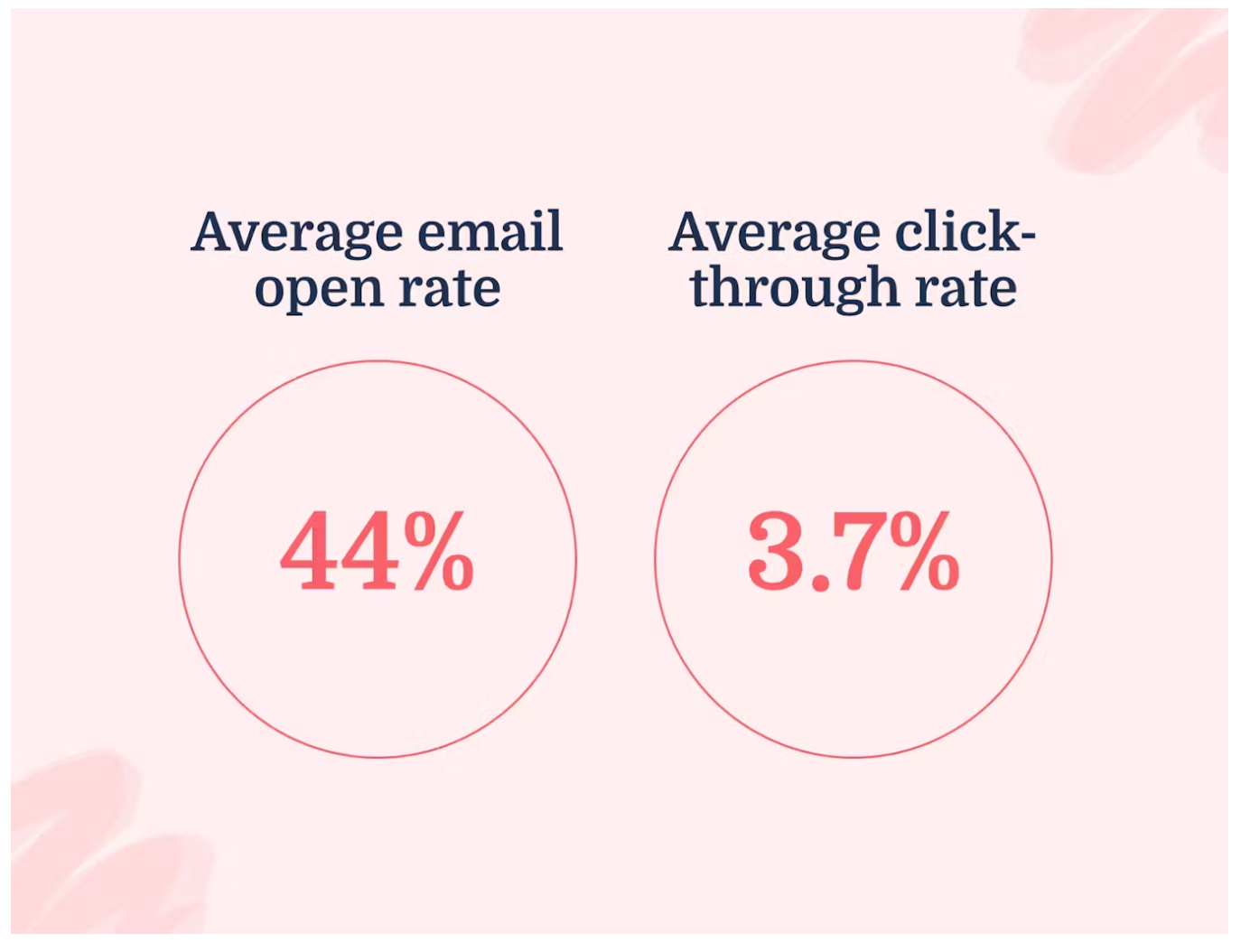
Email marketing
The number of email users was expected to grow by 2.5% in 2024 and 2025 to hit an estimated 4.73 billion.
Increasing email adoption rates highlight the need for course creators to add email marketing to their lead generation, nurturing, and conversion efforts.
Email has an average ROI of $36 for every $1 spent.
AI-powered personalization can increase this ROI by up to 70%. Additionally, emails had an average open rate of 44% and an average click-through rate of 3.7%.
81% of professional creators used email marketing tools53 in 2023.
Top-earning creators used apps like ConvertKit, Mailchimp, and Active Campaign to engage their audiences.
Sell online courses with Whop!
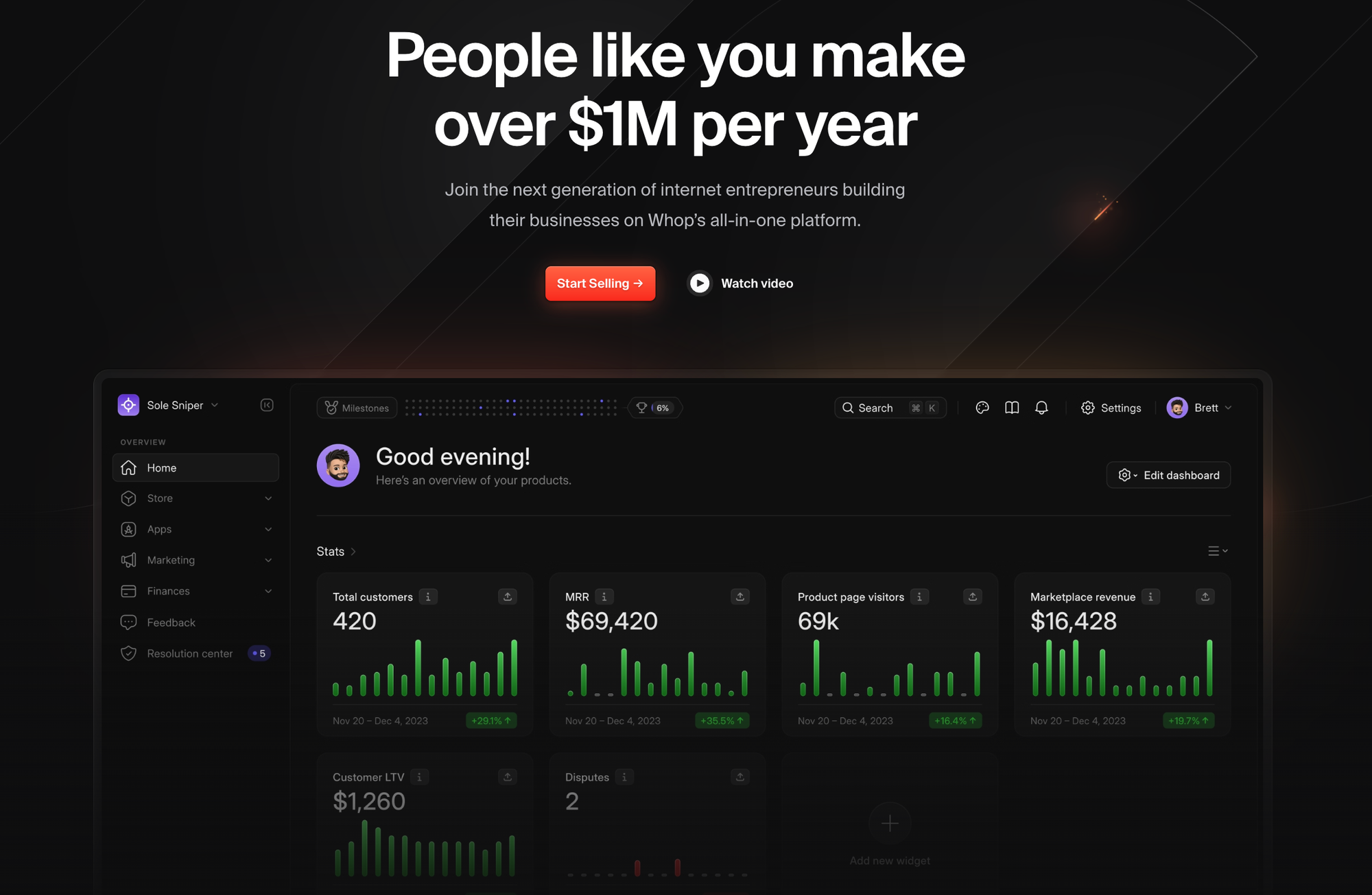
These course statistics reveal some exciting information, with higher education expected to attract over $2.4 trillion in spending by 2030, and consumers in the online learning market expected to exceed 1.1 billion by 2029. If you have education, knowledge, or a skillset to share, why not join this growing market by creating and selling your own course?
Whop is helping creators of all kinds to monetize. There are no limitations on the type of course that you can sell with Whop, and there are no upfront platform fees.
Monetize your content with your own Whop hub. With your hub you can sell your course, create a community around it, sell complementary products, memberships, subscriptions, and so much more. Plus, Whop sellers get access to an incredible dashboard to help your business scale. Create your course and join this exciting, growing market!
Sources
References
- Grow Enrollments
- Forbes
- Statista
- HolonIQ
- ClassCentral
- Mordor Intelligence
- Morgan Stanley
- Statista
- Weforum
- FutureLearn
- Statista
- Statista
- Oxford College
- McKinsey
- McKinsey
- Statista
- Statista
- Statista
- Thinkific
- Kajabi
- Companies Market Cap
- Udemy
- Udemy
- Udemy
- Coursera
- SHRM
- Coursera
- edX
- edX
- Udacity
- Stripe
- Kajabi
- Kajabi
- Thinkific
- Thinkific
- MasterClass
- Techcrunch
- Skillshare
- Skillshare
- LinkedIn Learning
- Statista
- Statista
- Companies Market Cap
- Class Central
- Thinkific
- Teachable
- Thinkific
- Podia
- Paradiso Solutions
- Hubspot
- ConvertKit





